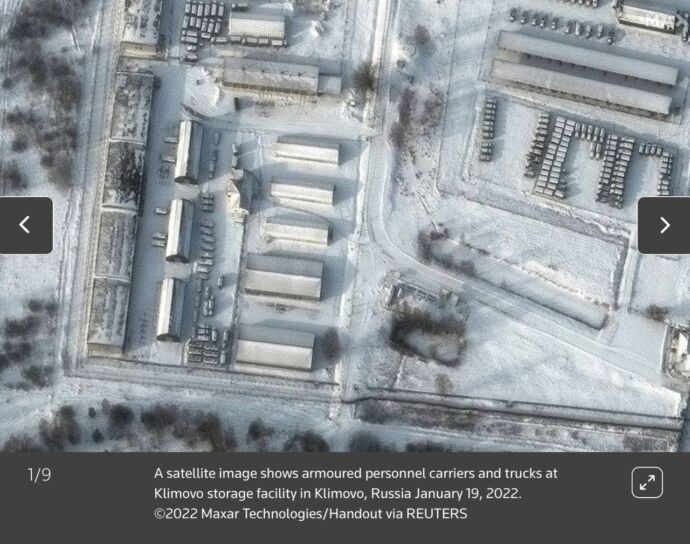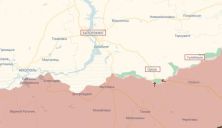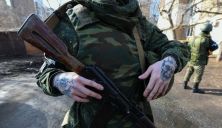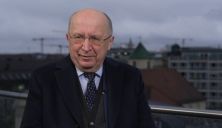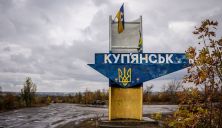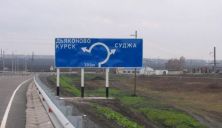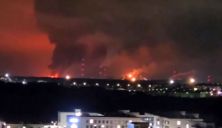According to some estimates, Russia could capture Kiev in a couple of days and leave up to 50,000 civilians dead or wounded. The invasion, they said, could also result in one million to five million refugees, with many of them pouring into Poland. This was reported by UA with reference to The Washington Post.
Russia’s deputy ambassador to the United Nations has dismissed new U.S. military and intelligence assessments on a potential Russian invasion as alarmist, likening the reports — which estimated Russia could seize Kyiv in days and leave up to 50,000 civilians killed or wounded — to Moscow foreshadowing an attack by Was
The updated U.S. military and intelligence assessments briefed to lawmakers and European partners over the past several days were U.S. officials’ bleakest assessment yet of the deteriorating security situation in Ukraine. They came as the Biden administration was also warning that Moscow was considering filming a fake attack against Russian territory or Russian-speaking people by Ukrainian forces as a pretext to invade its neighbor — a claim the Kremlin has strenuously denied.
Seven people familiar with the assessments said Russian President Vladimir Putin now has 70 percent of the combat power he needs for an assault that — under the most extreme scenario — could quickly take out the capital, Kyiv, and remove the country’s democratically elected president, Volodymyr Zelensky. Such an invasion, they said, could trigger a refugee crisis in Europe as up to 5 million people flee.
As of Friday, there were 83 Russian battalion tactical groups, with about 750 troops each, arrayed for a possible assault. That is up from 60 two weeks ago.
The White House has said the United States does not have information that Putin has made a decision to invade. But satellite imagery and other intelligence indicate he has amassed more than 100,000 troops and equipment on the border with Ukraine — one Western security official put the number at 130,000 — potentially positioning for what could become the largest military land offensive in Europe since World War II.
The European official and others familiar with the assessments spoke on the condition of anonymity about intelligence matters.
Although U.S. officials believe an assault could be launched any day, optimal conditions are believed to come between mid-February and the end of March, when Ukraine’s flat, open terrain and the rivers cross-crossing it are frozen and armored vehicles can maneuver easily.
One possibility is that Putin may delay until after the Winter Olympics in Beijing conclude Feb. 20, in order not to upset China by overshadowing the games and threaten Chinese financial assistance in response to U.S. sanctions.
Moscow has denied that it intends to invade Ukraine, but it has made clear it considers the presence of Western troops and weapons in the former Soviet sphere an unacceptable security threat. Putin has accused the United States and its European allies of ignoring his key demands to bar Ukraine from joining NATO, rule out putting offensive strike weapons on Russia’s borders and roll back the NATO’s weaponry and force posture to its 1997 boundaries.
Russia also has attempted to paint Ukraine as the aggressor in the crisis, warning a NATO-backed Kyiv could try to take back Crimea, which was annexed by Moscow in 2014. Meanwhile, some Ukrainian officials, including President Zelensky, have taken issue with Washington’s description of Russian deployments and the likelihood of an “imminent” attack, fearing it will cause panic and hurt Ukraine’s economy.
Ukraine’s Zelensky’s message is don’t panic. That’s making the West antsy.
The latest grim assessment from U.S. officials indicates the window for negotiating a diplomatic solution to the crisis is closing.
President Biden is set to meet this week with new German Chancellor Olaf Scholz, who has been accused of not doing enough to respond to Russian aggression. Germany has been reluctant to export arms to Ukraine, much to the consternation of Kyiv, though Scholz has recently indicated that “all options” — including the controversial Nord Stream 2 gas pipeline that would deepen Berlin’s reliance on Moscow for energy — are on the table for sanctions in the case of a renewed Russian invasion.
Secretary of State Antony Blinken is set to travel to Australia and the Pacific this week for talks, including a gathering of his counterparts from India, Australia and Japan, who are part of an emerging partnership, known as the Quad, united in their misgivings about China.
The fact that Russian troops will capture Kiev in a few days writes New York Times.
If Mr. Putin went ahead with a full invasion, including the potential deaths of 25,000 to 50,000 civilians, 5,000 to 25,000 members of the Ukrainian military and 3,000 to 10,000 members of the Russian military. The invasion, they said, could also result in one million to five million refugees, with many of them pouring into Poland.
Should Mr. Putin decide to invade, American officials believe he is not likely to move until the second half of February. By that point, more ground will have frozen, making it easier to move heavy vehicles and equipment, and the Winter Olympics in Beijing will have ended or be winding down, which could help Mr. Putin avoid antagonizing President Xi Jinping of China, a critical ally for the Russian president.
The fact that Russian troops will capture Kiev in a few days writes New York Times , says іn the stretch of Europe from the Baltic Sea to the Black Sea, where Moscow and the West have competed for influence for decades, the threat of a new military conflict is growing.
In publication Reuters, says that Russia has about 70% of the combat power it believes it would need for a full-scale invasion of Ukraine and is sending additional battalion task forces to the border with a neighbor, two U.S. officials said. on Saturday.
Over the past two weeks, the number of battalion tactical groups in the border area has increased to 83 from 60 as of Friday, with 14 more on the way, officials told Reuters on condition of anonymity due to confidentiality of information.
But, Аp News in publications Looking for evidence? Trust us, Biden administration says, expressed claims to the reliability of the voiced Messages.
When President Biden’s administration was asked for evidence to back up dramatic claims about national security developments this past week, it demurred with a simple rejoinder: You’ll have to trust us on that. No, they would not reveal what led them to say they knew that Russia was plotting a false flag operation as a pretext to invade Ukraine. No, they would not explain their confidence that civilian casualties were caused by a suicide bombing rather than U.S. special forces during a raid in Syria.
Read also: If Ukraine falls, the world becomes more dangerous.

